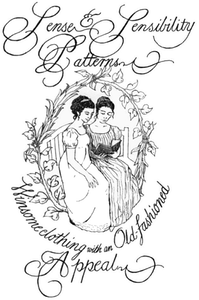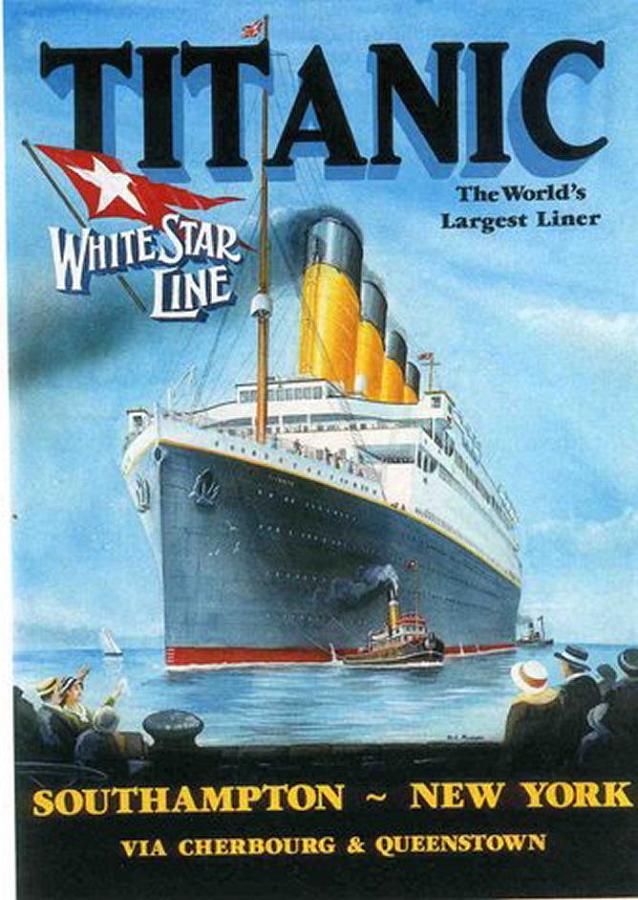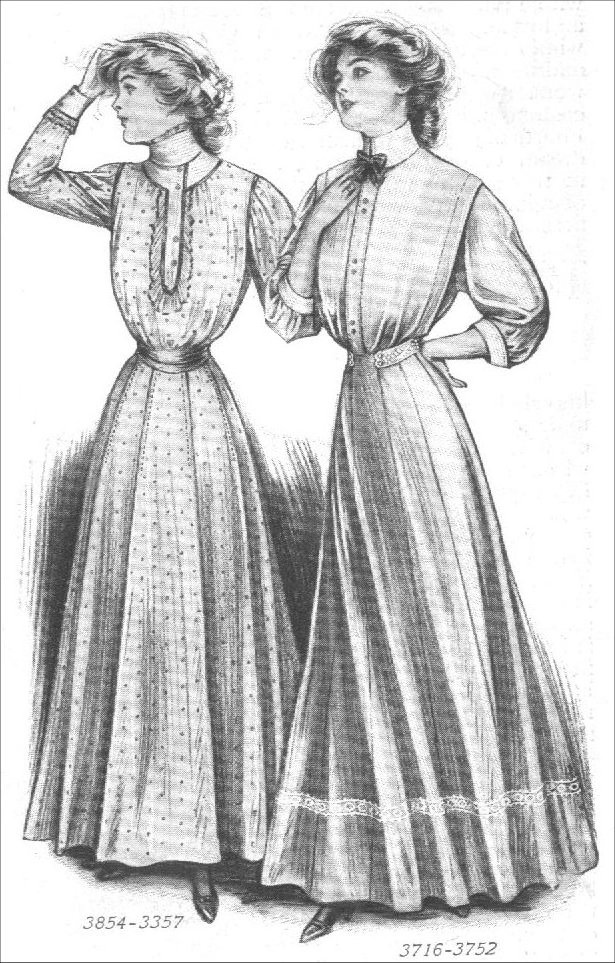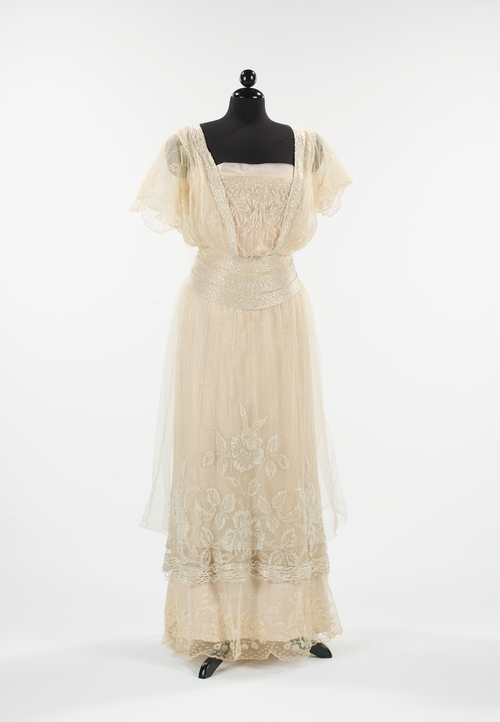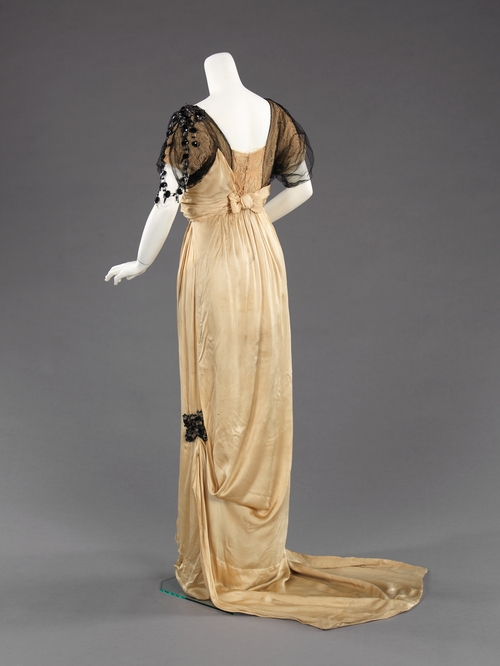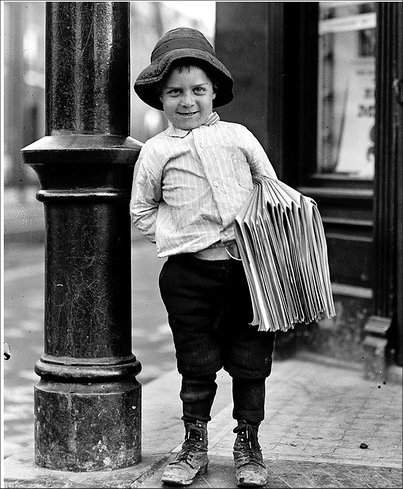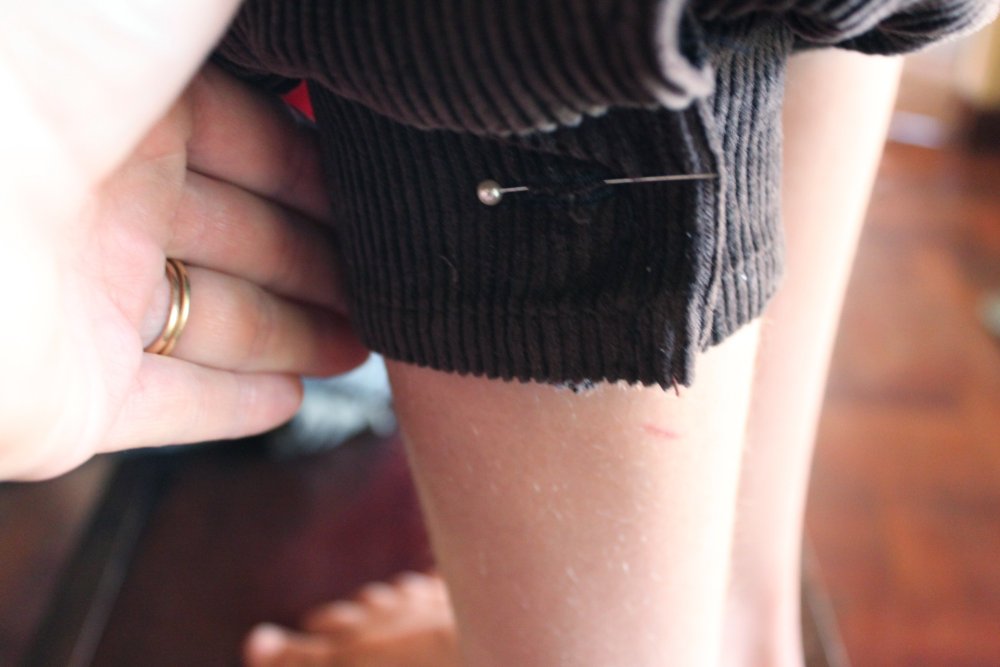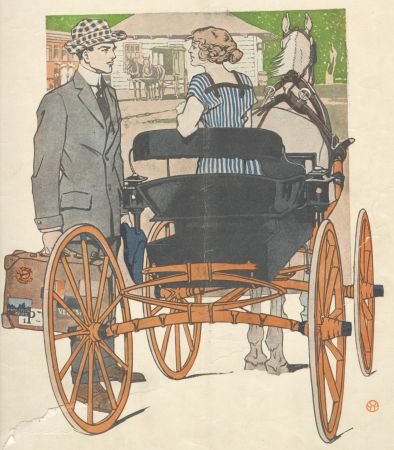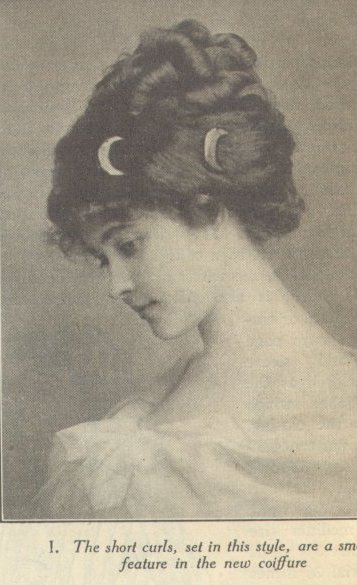Reproducing 1912 Fashions - Remember Titanic!
This April, we will mark the 100th anniversary of the sinking of Titanic. It hasn't been fashionable in recent years to laud the heroes of that fatal night, but I am glad to see there are many memorial events planned for this year (the Titanic 100 in Branson, Missouri, promises to be a spectacular event, and there are even cruises that will follow Titanic's original route and stop at the site of the sinking). I'm especially delighted to see that attendees plan to dress in historical fashions to commemorate both those who died and those who survived the terrible tragedy of April 14, 1912.I've drawn from my personal collection of catalogs and magazines to pull together images to inspire you as you reproduce Titanic-era fashions for your family. A huge thank-you goes out to long-time customer Carol K., who sent me photographs from the April, 1912, issue of The Ladies' Home Journal, chock-full of fashion images and articles that help illuminate the time period. At the end of the article you will find a link to download a free eBook containing all the images in this special feature, plus an array of extra goodies that will help you gain an excellent picture of the time period. You can print these for your own personal use, and feel free to pass the link around to others. The eBook is free until the end of April!Women's fashions in 1912 were in a period of transition from the "S"-bend shape popular in the Edwardian era to the more natural, columnar silhouette of the middle 1910s. In the image at right from a 1908 fashion article, you can see the sway-backed silhouette and the emphasis on a tiny waist. Clothing catalogs of the time period still retain the S-bend fashions that had been popular for over a decade, but fashion magazines tended to feature what was new and grabbing attention in Europe. I have an original copy of a March 1912 issue of La Mode that shows the nouveau empire waistline that was coming into style:The blouses below from the May 1912 issue of La Mode show the new "natural" neckline now popular. The high lace collars would still hang on for another couple of years, but they were definitely on the way out:
These looks can be reproduced with my "Beatrix" Shirtwaist Pattern and pair perfectly with the "Beatrix" Skirt. The free eBook includes a feature on detachable collars for shirtwaists as well.
Lucile, Lady Duff-Gordon, was a well-known fashion designer in 1912 and also happened to be on the Titanic (she survived). Her beautiful gowns helped shape the new fashion era of the 1910s on into the 19-teens with their fuller skirts and emphasis on beautiful draping and the use of soft, floaty fabrics. Lucile's designs attracted stage actresses and the well-to-do. They were also commercialized for middle-class catalogs in America, and Lucile wrote columns on fashion for several prominent magazines of the day. Her easy-fitting, romantic gowns paved the way for the "reform" styles of the 1910s, since she designed a less restrictive corset and did not bone the bodices of most of her gowns. Lucile's famous claim was that she wanted to "dress the soul" and not just the body. She adored feminine lines and loved to use graceful, artistically draped materials.My 1910s Tea Gown pattern includes diaphanous skirt layers, the slightly raised waistline, and the Asian-inspired sash of the era. Its square neckline and bodice inset are appropriate for very dressy teas and for evening wear as well:If you plan to attend any formal dinners or evening socials for Titanic, there are a lot of gorgeous extant 1912 evening gowns in museum collections that leave the mouth agape with the lusciously draped layers of silk, satin, chiffon, and velvet. The images below are from the Costume Institute of the Metropolitan Museum of Art in New York City:Be sure to check , as there is a beautiful pattern for a 1912 evening gown similar to the one above!If you'll be mainly involved in daytime events like afternoon teas, steamboat outings, or even theme cruises, you'll want to stick to day wear appropriate to the occasion. The image below is from a 1910 catalog and shows "lingerie" dresses considered correct for an outing on a ship or by the seashore:You can see the high collars that had been popular for about 15 years by the time this catalog was published. Those collars would hang on for another few years, so you still see them in the following fashion images from the April, 1912, edition of The Ladies' Home Journal.Note that all the skirts have attractive details between the hipline and hem, including wide tucks and decorative buttons. The bodice on the far right shows the draping now growing in popularity. Here is the opening paragraph from the accompanying article:
It is in the first days of early spring, when under the sun's warm rays we joyfully lay aside our heavy outer garments and furs, that our thoughts turn to a suitable dress for street wear. The material, color, and design must be decided upon with a view to the appropriateness for the time of day and purposes for which the gown is required. Taffeta is the newest silk, and is charming for simple undraped gowns and tailored suits, while the more clinging, supple qualities of crepe and satin charmeuse, and foulard, voile, and marquisette are given the preference for more composite designs.
This lovely brown Easter dress has elbow-length sleeves, a cross-draped bodice (creating a "V" in the center), and the overskirt with contrasting underskirt that would become ubiquitous in 1912-1914.More hints for appropriate fabrics are given in an article titled, "What I See in New York" by Blanche G. Merritt:
[T]here are certain types of fabrics that are most cool and comfortable to wear: transparent cottons and voiles and thin summer silks; and it is well, when about to make such dresses, to select styles which, while suitable for all times, will be especially so for the warm days.
The fashions above for "stout women" show how beautifully tailored lines flattered all shapes. The asymmetrical front closure on the green suit at left slimmed the waist, as did the long lines of the brown coat. The draped necklines on the gowns at right created a "V" on top that matched the inverted "V" in the skirt, creating the illusion of an hourglass waistline. Beautiful! You still have the high lace collars here, which seem to be normal for "town" or "visiting" outfits.
From the text of the original article:
A long coat should be chosen not only with regard to design, color, and trimming, but also with regard to the purpose for which it is intended. If you can have only one coat, select a simple tailored one like the coat of brown broadcloth with a velvet collar shown above. Such a garment is always in good taste and may be worn for all occasions for several seasons.
Traveling suits are easy to create using my "Beatrix" Jacket Pattern, and it is quite possible to reproduce the asymmetrical fastening with a bit of tweaking as you cut out the jacket front. Feel free to drop me a line through the Contact Form if you have questions about how to do this. Past Patterns also offers a "Vintage Revivals" copy of a long coat pattern from 1911-12.
This sock advertisement from March 1912 shows a ladies' afternoon dress. The style of the bodice is very similar to my 1914 Afternoon Dress pattern's silhouette. The neckline features a lace inset, and there is lace at the edge of the shoulder around the armhole as well. The bodice and overskirt appear to have a lightweight, semi-sheer material over a candy pink fabric. Note the natural neckline and elbow-length sleeves. When I made an "heirloom" dress for myself from the 1914 pattern, it was very much inspired by this ad illustration (I added the blue silk belt for contrast):
This May, 1912, cover for The Housewife magazine also shows the natural neckline and elbow-length sleeves popular at the time. Note the beautifully detailed apron!
Amanda Kastner, winner of my 2004 Young Designers' Contest, created the 1912 Kimono Dress Pattern (now available in ePattern format!). She drew her inspiration from a couple of fashion illustrations from 1911 and 1912:
The two-toned dress on the far left was the chief inspiration for the pattern, which is an absolutely perfect day dress for Titanic events and makes up beautifully as a tea gown in dressier fabrics like silk taffeta, silk georgette, and other materials that drape nicely. I love Amanda's original illustration, which shows just how charming this easy-to-make dress is (note the optional inset on the right-hand dress, similar to the design second from the right in the illustration above):
Little girls' clothing in 1912 reflected a trend toward more comfortable designs suitable for play:
I especially like the kimono-sleeve style of the dress on the far left. The neckline, cuffs, and hemline all use a contrasting material. The frock is simplicity itself--a big departure from the fussier dresses for little girls of a decade before. Note the wide collars with a "middy" influence on the two outfits to the right. The accompanying article recommends batiste, chambray, dotted Swiss, linen, and printed China silks for little girls' dresses. For coats, serge (ridged twill) seems to be the favorite, but there's also a recommendation to make a coat out of the same material as the dress (which is what you see on the far right model above).
The image below, from an April 1912 French fashion periodical (Moniteur), shows a girl in a dress very similar to my Girls' 1914 Dress Pattern. The only modifications necessary would be raising the waistline about two inches and adding ruffles to the puffed sleeves. The eyelet collar over the bodice looks detachable, which matches a lot of the ladies' fashions of the day.
Do not miss Au Fil du Temps on eBay, who graciously provided this image. They have a wealth of original fashion illustrations, including the two below from late 1911:
The drop-waist dress on the left with its wide belt is almost a "sneak peek" of early 1920s fashions for girls. It's definitely comfortable and easy to wear. The longer "jumper"-style dress on the right goes over a fine cotton blouse. This is a simple style to reproduce, even with modern patterns.Finding girls' patterns from this time period is a little more challenging than finding ladies', but they are out there. I highly recommend
, which is great for 1912.
carries just about every single historical costume pattern in print and has a lot of
girls' dress and coat patterns
from this period.
So what about boys? The sailor middy has been a perennial favorite from the mid-19th century all the way up to the present day. You saw the 1912 version in the Moniteur image above. These are fairly easy to reproduce with a simple double-breasted shirt pattern and a second pattern for knee-length shorts. Adding a middy collar is not difficult, and you can use the easy tutorial on eHow to create one. But the easiest outfit to reproduce by far (and one that requires minimal sewing and needs no pattern) is the classic "newsboy" look of the 1910s:
Real newsboys of the time period were usually poor children living hand-to-mouth, but their clothing (while patched and mended) still resembled what middle-class boys wore.
Up to about age 12, boys wore knickers over long socks (or stockings), paired with an Oxford-style button shirt (and sometimes a vest and/or tie). You can easily reproduce this look with thrift store clothing finds. Here's what you'll need:
On the left is a pair of dark brown corduroy trousers with no back pockets and no pleating-- just simple, straight pants (dark khakis and wool suit trousers are also appropriate). On the right is a white button Oxford shirt. The collar has no buttonholes, which is important, as the collars of 1912 were starched and did not fasten to the front of the shirt with tiny buttons. Here's a close-up:
Have the boy for whom you'll be making the outfit try on the trousers and stand on a chair. Grab one leg of the trousers about two inches below the knee and mark it, since that's where the knee-band is going to go on these short pants (you want the trousers to pouf out a bit over the knee):
Using a measuring tape as a guide for your 5/8" seam allowance, cut across the first leg of the trousers:
Take the part of the leg you've just cut away and use it to cut away the exact same amount from the other leg of the trousers. Now you have two cutoff sections:
Cut up one side of each cutoff section and open out flat. From the lower (hemmed) edge of these sections, cut two 3"-wide bands:
Have your model stand on the chair again, and measure the area below the knee for kneebands. These will need to fit snugly around the leg below the knee with enough of an overlap to button. You'll also need to hem under the short raw edges of the bands, so be sure to leave room for that as well.
Once you've marked the bands, cut them to the correct length:
Now take the trousers and use a seam ripper to carefully open up about two and a half inches of the outseam on each leg:
Hem the opened outseam edges to finish them:
Now run two sets of basting stitches around the lower edge of each trouser leg, breaking at the inseam:Hem the short raw edges of each knee band:Pin each knee band to a trouser leg, right sides together, matching the hemmed short edges of the bands with the hemmed outseam openings and matching each inseam with the center of each band. (The long raw edge of the band will match the raw edge of the trousers.) Pull up basting stitches evenly to fit:Stitch each knee band to its trouser leg, then press the seam upwards (away from the knee band). As you see, the original hem from the trousers makes a nicely finished edge for the knee bands:Now its time to place a buttonhole in each knee band. Make sure you set the buttonhole on the "front" side of the knee band so that it will overlap the back.Now try the short pants on your model and mark the button placement by overlapping the knee band and "buttoning" it closed (carefully!) with a pin:Sew corresponding buttons in place, and your model is ready to dress up for all the fun! Here's my "newsboy":
You can also add a knit pullover vest for a slightly different look:
That iconic newsboy cap has never gone out of style. Here's an image from the April 1912 issue of The Ladies' Home Journal:
The description reads:
A favorite cap with the boys is shown above. It shades the eyes, fits snugly and only needs one good tug to put it on in the most secure manner. Then it has the additional attraction of being soft and small enough to slip into a boy's pocket when necessary, all of which endears this peaked cap to the little man of the family.
You can easily find newsboy caps online or at local shops in a variety of woolens and tweeds. They are the perfect crowning touch to your Titanic-era boy's outfit. Now, if this entire ensemble just happens to also look a bit like everyone's favorite intrepid boy reporter, I can only plead guilty:
Okay, let's take a quick look at men's clothing from this time period. A quick look is all you need, because men's fashion has changed so little in the past 100 years (leisure suits aside!). Here is the cover to a 1912 issue of Collier's magazine:
That's a pretty straightforward suit with pocket flaps on the front, notched lapels, and cuffed trousers. The key difference is in the collar of the shirt, which sits high around the neck rather than low against the lapel of the jacket. It is still possible to find these detachable starched collars today, or you can just get an Oxford dress shirt with no buttonholes in the collar and fold it a bit shorter to recreate this look. Here's another image from a 1912 catalog:
Again, these are fairly basic suits with high collars. It is very easy to get second-hand suits inexpensively, but you want to keep an eye out for ones with three or four buttons up the front rather than two, as the suits of this time period fastened up closer to the tie and collar than suits of the mid-20th century. 1912 suits also fit closer to the body with a bit of a nipped-in waist. Bulky, loose suit coats are therefore not correct for a 1912 impression. Long overcoats (if worn) can, of course, be loose, as they go over the regular suit.
Older boys also wore suits with full-length trousers, as you see in this historic image of a newsboy announcing the sinking of Titanic:
It's quite easy to find men's hats that look correct for the time period, and men's lace-up shoes really haven't changed at all in 100 years, either! Etsy and eBay are both crammed with vintage and reproduction hats appropriate for the Titanic era. So let's take a look at some hats for women and girls from 1912:
At left is a wide-brim "picture hat" with water lilies. At right is a tall "daisy-covered hat with graceful bow in front."
You can see that wide-brimmed, flower-covered hats were quite the rage in April 1912 with these two examples. These are very easy to reproduce with a plain straw or "chip" base hat and artificial flowers. Looks like "the more, the merrier" applies here!
Here are a couple of adorable hats for little girls:
Here are the descriptions from the 1912 LHJ:
These hats may be made up in straw, or they are charming shapes for washable cretonne, linen, duck, or pongee.
What fun to dress up a couple of straw hats with wide ribbon bows to frame a girl's face!
Okay, to round up, let me include some inspiration for 1910-1912 ladies' hairstyles:
Coiled braids, top curls, and loose tendrils were quite the rage at this time. If you scroll back up to the Collier's magazine cover, you can see the young lady driving the horse cart has two loose buns at the nape of the neck, while the hair on top is basically parted in the center and waved back over the ears. Women who didn't have a lot of hair used "switches" created from their own hair (what fell out each time they brushed). So it's not cheating to use extra braids and curls in a color matching your own hair!
For little girls, loose, fluffy curls and ringlets are perfect. You can learn how to easily set pincurls, but hot rollers are also fine if you're pressed for time.
There are several excellent sources online that will help you further as you research Titanic-era styles. I highly recommend the following links:
Your Wardrobe Unlock'd: the Costume Maker's Companion ~ YWU is a subscription-based site that offers hundreds of in-depth articles on reproducing period fashions. Best of all, this year's focus is 1812 and 1912! There are several articles on Titanic fashions, including one on how to reproduce hats!
Historical Sewing has a fantastic article reviewing available Edwardian and Titanic-era sewing patterns and costuming books. This article is a huge lifesaver if you plan to dress yourself from the inside out for 1912.
American Duchess offers stunning reproduction shoes just perfect for Titanic costumes. The price is a bit ouchy ($110), but if you're really going all out, this is the style you want to look for!
I hope you enjoy preparing for Titanic memorial events or just creating beautiful outfits to enjoy any time. Click on the image below to download the free eBook, which contains all the vintage images in this article, plus a bunch of wonderful bonus images, articles, and 1912 ads. Feel free to share the link. The eBook is available until the end of April. Happy sewing!
